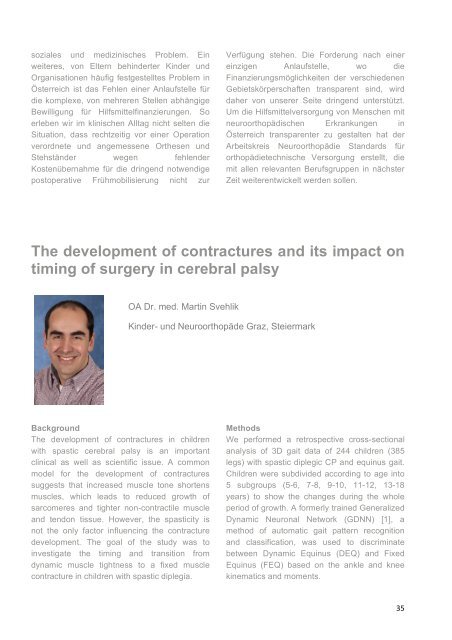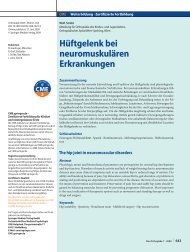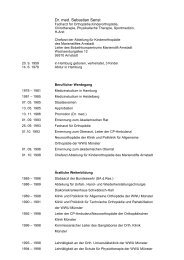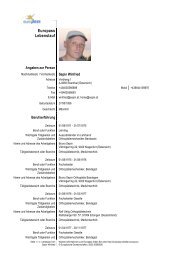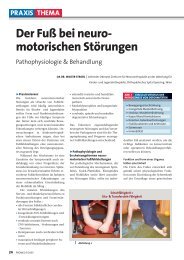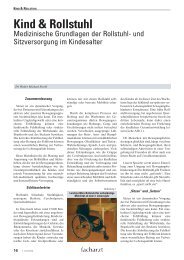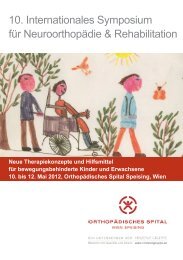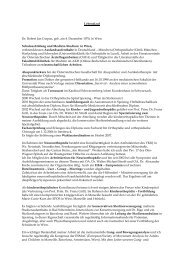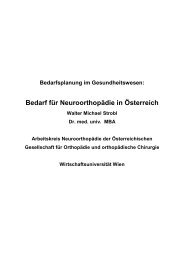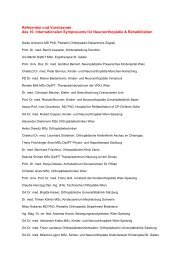Abstract - Motio
Abstract - Motio
Abstract - Motio
Erfolgreiche ePaper selbst erstellen
Machen Sie aus Ihren PDF Publikationen ein blätterbares Flipbook mit unserer einzigartigen Google optimierten e-Paper Software.
soziales und medizinisches Problem. Ein<br />
weiteres, von Eltern behinderter Kinder und<br />
Organisationen häufig festgestelltes Problem in<br />
Österreich ist das Fehlen einer Anlaufstelle für<br />
die komplexe, von mehreren Stellen abhängige<br />
Bewilligung für Hilfsmittelfinanzierungen. So<br />
erleben wir im klinischen Alltag nicht selten die<br />
Situation, dass rechtzeitig vor einer Operation<br />
verordnete und angemessene Orthesen und<br />
Stehständer wegen fehlender<br />
Kostenübernahme für die dringend notwendige<br />
postoperative Frühmobilisierung nicht zur<br />
Verfügung stehen. Die Forderung nach einer<br />
einzigen Anlaufstelle, wo die<br />
Finanzierungsmöglichkeiten der verschiedenen<br />
Gebietskörperschaften transparent sind, wird<br />
daher von unserer Seite dringend unterstützt.<br />
Um die Hilfsmittelversorgung von Menschen mit<br />
neuroorthopädischen Erkrankungen in<br />
Österreich transparenter zu gestalten hat der<br />
Arbeitskreis Neuroorthopädie Standards für<br />
orthopädietechnische Versorgung erstellt, die<br />
mit allen relevanten Berufsgruppen in nächster<br />
Zeit weiterentwickelt werden sollen.<br />
The development of contractures and its impact on<br />
timing of surgery in cerebral palsy<br />
OA Dr. med. Martin Svehlik<br />
Background<br />
The development of contractures in children<br />
with spastic cerebral palsy is an important<br />
clinical as well as scientific issue. A common<br />
model for the development of contractures<br />
suggests that increased muscle tone shortens<br />
muscles, which leads to reduced growth of<br />
sarcomeres and tighter non-contractile muscle<br />
and tendon tissue. However, the spasticity is<br />
not the only factor influencing the contracture<br />
development. The goal of the study was to<br />
investigate the timing and transition from<br />
dynamic muscle tightness to a fixed muscle<br />
contracture in children with spastic diplegia.<br />
Kinder- und Neuroorthopäde Graz, Steiermark<br />
Methods<br />
We performed a retrospective cross-sectional<br />
analysis of 3D gait data of 244 children (385<br />
legs) with spastic diplegic CP and equinus gait.<br />
Children were subdivided according to age into<br />
5 subgroups (5-6, 7-8, 9-10, 11-12, 13-18<br />
years) to show the changes during the whole<br />
period of growth. A formerly trained Generalized<br />
Dynamic Neuronal Network (GDNN) [1], a<br />
method of automatic gait pattern recognition<br />
and classification, was used to discriminate<br />
between Dynamic Equinus (DEQ) and Fixed<br />
Equinus (FEQ) based on the ankle and knee<br />
kinematics and moments.<br />
35


